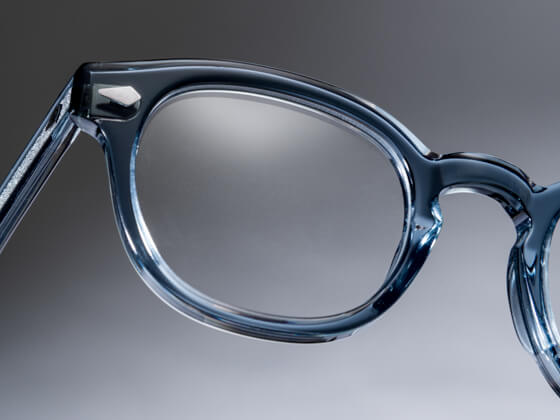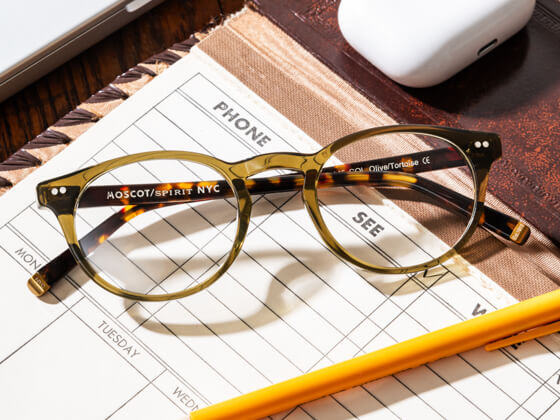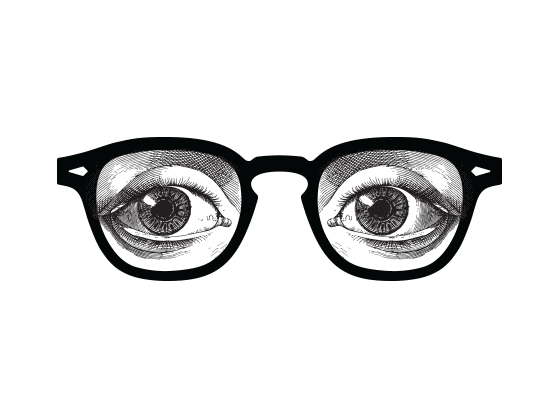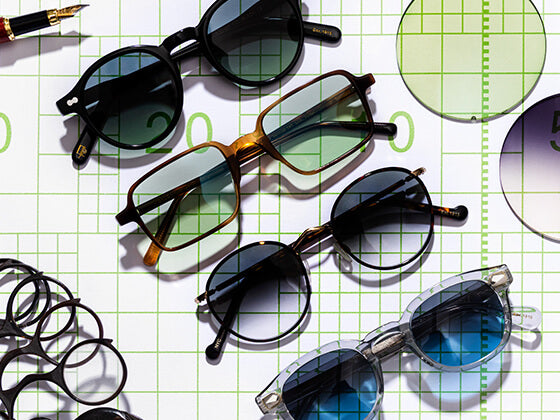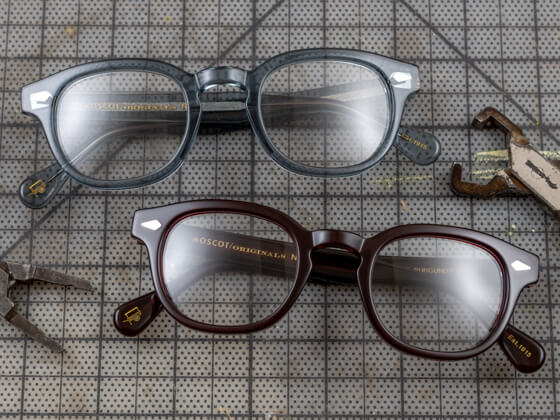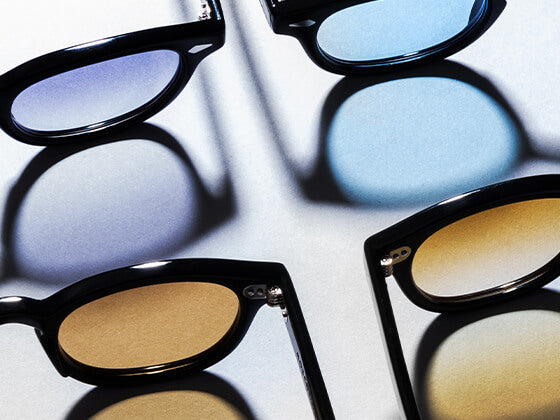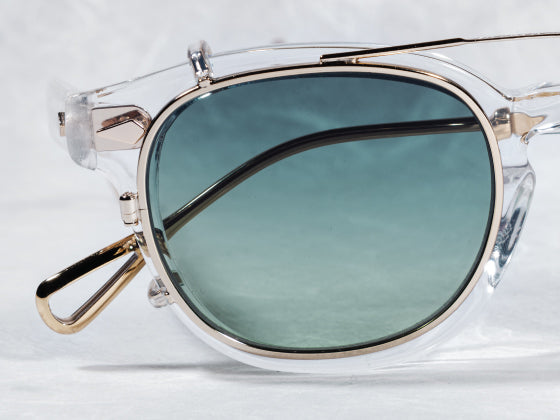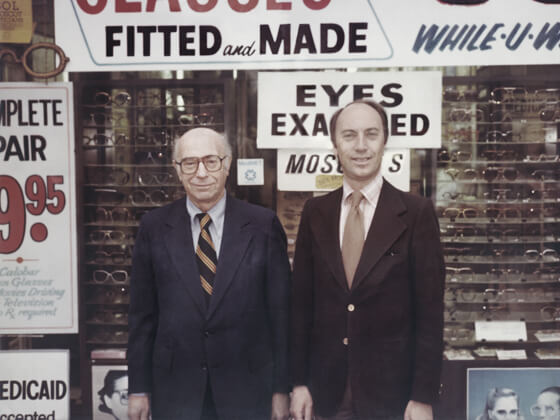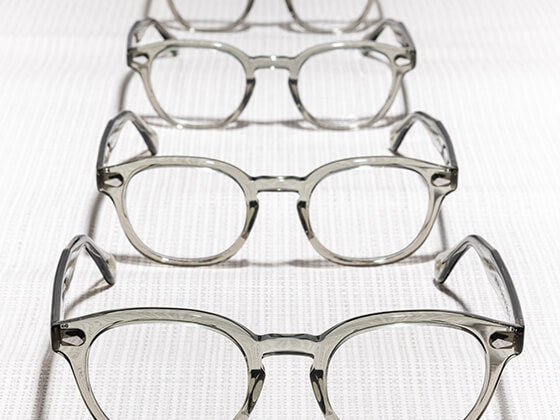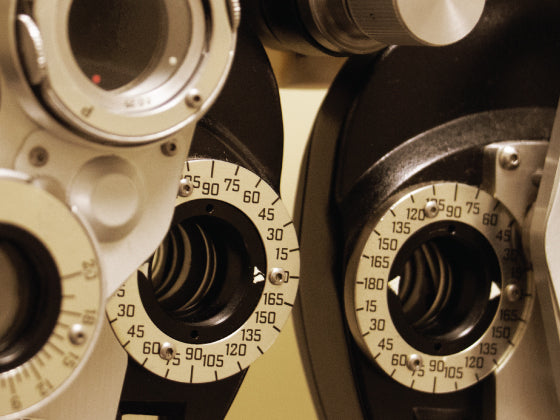With over 100 years and 5 Generations of optical expertise, MOSCOT has been crafting iconic eyewear with each passing decade. From the round metal specsof the ‘20s, to the tinted aviators of the ‘70s, and even providing Blue Light Digital Relief lenses to frames today, MOSCOT continues to create heritage eyewear you can trust.
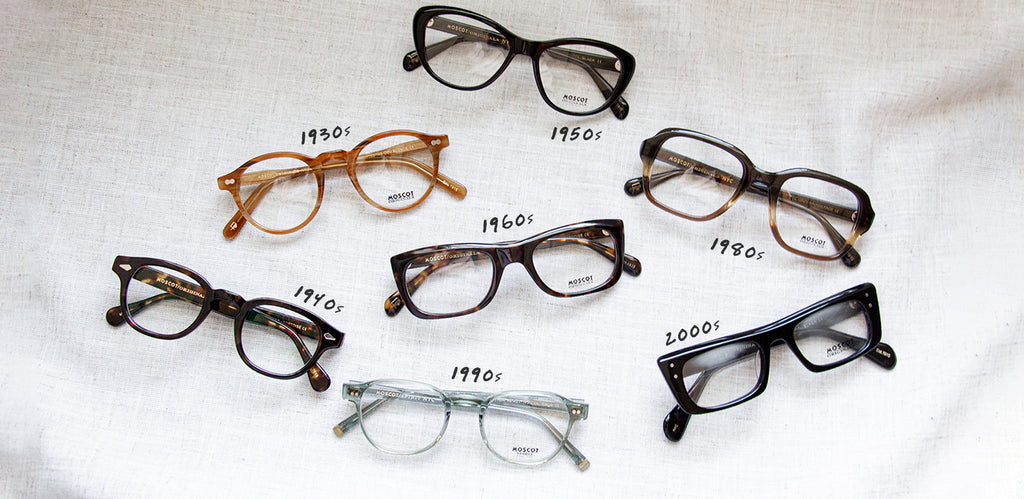
1920s:
The iconic eyewear of the 1920s was predominantly characterized by small round, oval, or octagonal shapes. Round metal frames became popular for both men and women at this time, especially with cable temples for added comfort and support. The NACHUS, inspired by the classic round specs worn by 1st Generation Hyman Moscot in the 1920s, are made from metal with Windsor rim-inspired eye wire, detailed filigree, authentic cable temples, and bone colored nose pads.
1930s:
Round frame glasses remained quite popular into the ‘30s, this time showing up in acetate variations. The round, full-vue MILTZEN, was first introduced in the 1930s and is still a family favorite of today. Made from acetate with two adjoining dot rivets on the front and temples, a key hole bridge, and real three barrel hinges, The MILTZEN is a round classic.
1940s:
In the 1940s, glasses became more than a medical device, and took new form as a fashion accessory. The iconic LEMTOSH stands the test of time with its iconic design and continues to uphold a legacy of its own. This rounder classic style, first introduced in the mid-20th century, has served as the calling card for generations of intellectuals, artistes, and auteurs.

1950s:
Popularized in the 1950s, the cat eye became a staple frame shape in eyewear. The subtle curvature of the frame playfully emphasizes the eyes with a unique touch. A cool cat eye with a nod to the 50s, The SHEITLE isn’t shy. Made from color coordinating column rivets and a kaleidoscope of colorways, you may just throw on your SHEITLE and take on a whole new look!
1960s:
Thick geometric shapes such as The KELEV, grew in popularity into the ‘60s. The unique beveling on the frame-front and column rivets on the temples provide structure for the Black, Tortoise, and Light Grey acetate used to boost the look.
1970s:
The square aviator with a double-bar bridge became the defining eyewear style of the ‘70s. Aviators, while initially designed for pilots, became quite popular, especially with the addition of gradient fashion tints and shades. The SHTARKER with Big Apple Fade Custom Made Tint™ embodies the funky fashion of the 1970s.

1980s:
Oversized frames remained in style in the 1980s and even bolder specs emerged in the form of fashionable shapes and colors. The MEGILLAH, made from acetate with square rivets on the temples, no exposed hardware on the frame front, and a saddle bridge was inspired by the frames MOSCOT Orchard Street Shop Manager, Morty wore back in the day. Available in colorways such as Black, Tortoise, and Grey-Brown Fade, The MEGILLAH is a revamped ‘80s classic.
1990s:
The ‘90s saw a shift to smaller, minimalist designs, much like the thinner silhouette of The ARTHUR. This frame is based on the shapes of decades past, but with a slimmed down look, a thinner gauge, and a key hole bridge that’s just a bit more business. Available in neutral colors like Mist/Tortoise, Sage, and Tobacco, The ARTHUR packs the ‘90s punch!
2000s:
The turn of the millennium inspired futuristic trends with sleek design—much like the demurely flirty essence of The MANGITO. With its unique lines and curves made from beveling on the frame front, The MANGITO transcends time.
2010s:
The next decade has brought in new lens adaptations to existing iconic frame styles with Digital Relief lenses. Digital Relief blue light glasses filter out high energy visible light and help to eliminate glare. These blue light glasses can provide a better experience for anyone viewing a digital screen.

Take a walk through time and shop MOSCOT frames through the decades!
